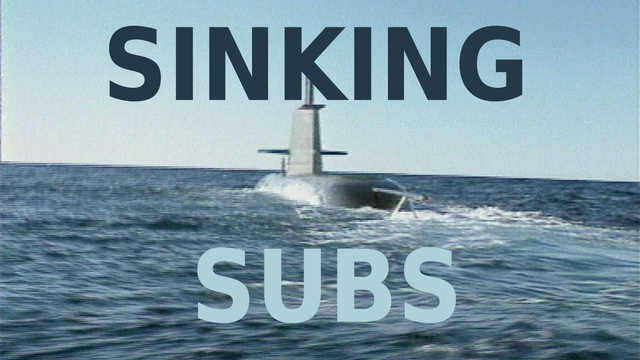Sinking Subs
Australia's new submarines are being deemed unsafe
 In a new major investigation, one of the Australian Navy's most respected former officers says the new Collins class submarines from Swedish manufacturer Kockums are potentially unsafe.
In a new major investigation, one of the Australian Navy's most respected former officers says the new Collins class submarines from Swedish manufacturer Kockums are potentially unsafe.
Retired Commodore Mick Dunne, appointed by the Navy in 1997 to investigate problems within the $5 billion submarine project, tells us his greatest fear for the Collins was "that we will lose one".
Speaking publicly for the first time, Commodore Dunne said he hoped breaking his silence "might get those submarines fixed to an extent where they(the crew) are not going to be in the danger that I think they're in now."
The Collins submarines, ordered by the Hawke government in 1987 are nearly two years behind their scheduled delivery to the Navy. Three have been provisionally accepted by the Navy yet none of the planned fleet of six is battle-ready. The submarines are too noisy and easily detected, and the much-vaunted computer combat system is a failure. In an underwater shootout, it's computers that determine who's the 'fastest draw'. Commodore Dunne says Australia's Collins submarines are likely to come off second best. "It's barely enough for the submarines to go to sea safely, and you certainly couldn't go to war," says the head of the Howard government's current inquiry into the Collins submarines, Sir Malcolm McIntosh.
The Programme reveals that the submarines did not undergo essential tests before the contract was awarded. In the most thorough analysis to date, we detail the flaws of the tender process which saw the Swedish company Kockums win the bid to up-date the navy's submarine fleet. Kockums, according to Commodore Dunne, was initially the least favoured bidder, handicapped by its lack of experience in large submarine design and construction. So how did Kockums win? It seems a tainted assessment process within the Defence Department was part of the reason.
By early 1985 a project team set up by the Defence Department to examine the bids had narrowed the choices to just two: the German design and, surprisingly, the Swedish entry. "It was obvious that [the Swedish entry] was a strawman," says Commodore Dunne, " that it was being put in there to provide no more than a presence and had no hope of winning the competition." Within the Hawke Labor government, however, there was an increasingly sympathetic view towards the Swedish bid - built partly on an admiration for the Swedish model of industrial relations, of greater co- operation between business and unions.
Classified documents show how just weeks out from the final contract decision, the Navy revised data which boosted the Swedish submarine's capabilities, while downgrading the Germans'. Admiral Mike Hudson, former chief of Navy, defends the eleventh-hour changes as "nothing unusual". But defence expert Professor Des Ball sees it differently: "This is the only instance that I know of, in a quarter of a century of watching fairly closely Australian defence acquisitions, where the tender performance claims of the manufacturer have in fact been upgraded - some cases here by 20, by 25%. This is unique. It raises very many questions in my mind about how these performance evaluations were done. It might even suggest that the navy's mind had been made up beforehand about which particular boat they wanted."
The selection procedure has now landed the Australian Navy with some seriously dangerous submarines.
Produced by ABC Australia
FULL SYNOPSIS

